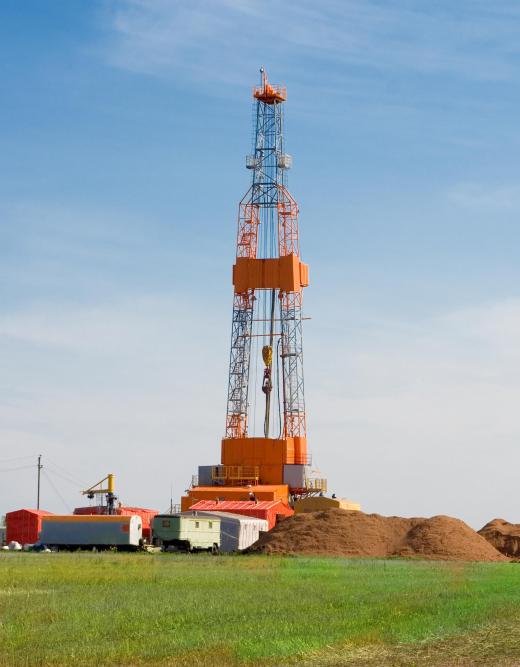Percussion drilling is a drilling technique in which a drill bit attached to rope or cable is repeatedly raised and lowered, impacting soil and rock, and making a hole deeper. Frequently used to drill wells or during mineral prospecting activities, this type of drilling has been used for thousands of years and is adaptable to whatever technology is available. Drills can be simple apparatuses consisting of a heavy bit and a rope, and operated by hand. Modern versions may also be called cable drilling and use an engine and cable to drill holes that may be hundreds of feet (meters) deep.
One use of percussion drilling is in third-world countries as a cheap and reliable way to drill water wells. Equipment is easy to build, transport, and simple to use. These drills introduce less contamination than conventional hand drilling methods, and this technique can drill a narrower and deeper hole than hand drilling through many different types of soil and rock.

If the substance being drilled through is sturdy enough, drilling can continue until water is reached. If it occurs in loose soil or sand, a pipe may need to be inserted to keep walls from collapsing. After the well is deep enough, permanent casing is installed, too.
There are some drawbacks to percussion drilling. It is slow and requires heavy equipment, and some drill bits may be very large and heavy if drilling through certain types of resistant rock. Unless an engine is available, the process can be very labor intensive. Water must also be added to the hole to make dry material easier to penetrate and a bailer used to remove accumulated mud and debris.
Modern cable drills use steel cables and larger bits, which may weigh as much as a ton (about 907 kg) and are powered by engines. Holes can vary in depth from less than 100 feet (30.48 m) to ten times that distance or more. The deepest hole ever dug by this method was 11,145 feet (about 3,397 m) in 1953.
For many years, percussion drilling was the primary method used to drill oil and geothermal wells. In recent years, rotary drills have become more common because they are quicker and are not limited to vertical holes, as percussion cable drills are. They still have a place, however, in some geothermal production zones.
This technology has even been adapted to laser drills. Gas turbine engine manufacturers have used concentrated laser beams to drill holes less than 0.04 inch (about 1 mm) in diameter in turbine engine components. These holes are used to cool the engines and prevent overheating.
